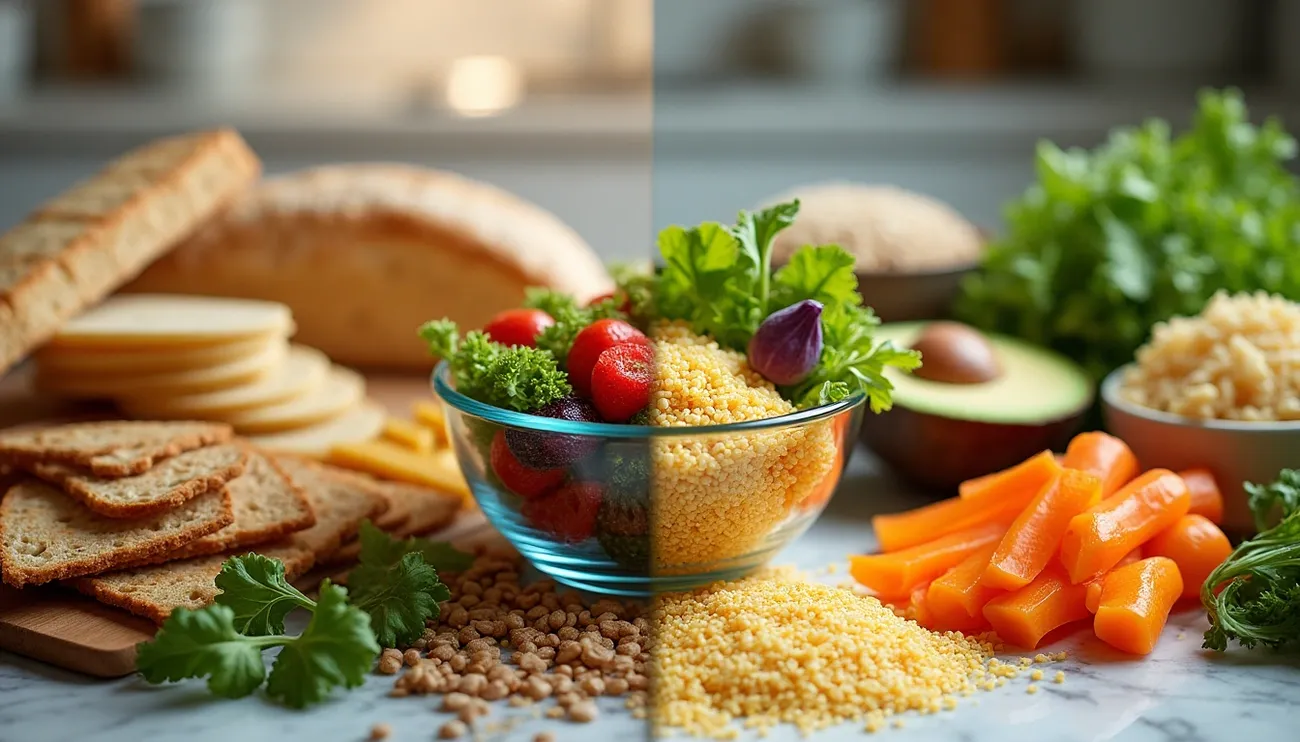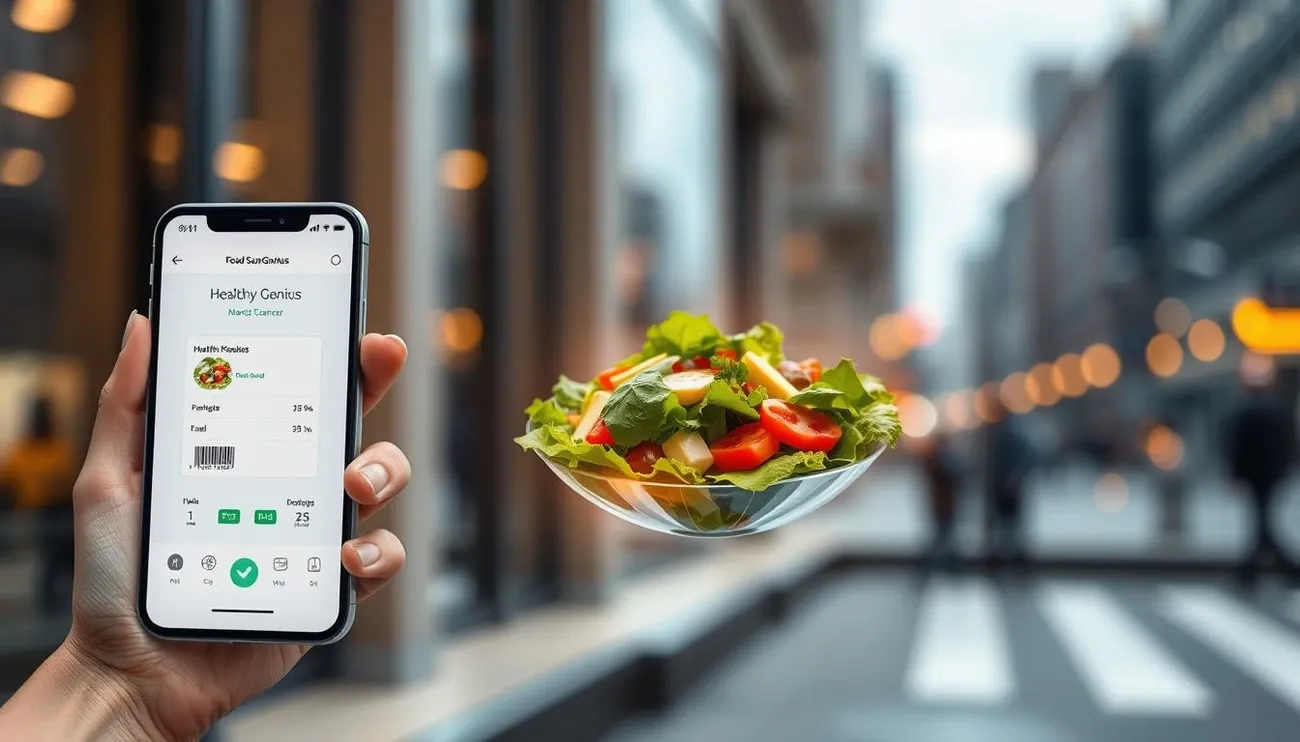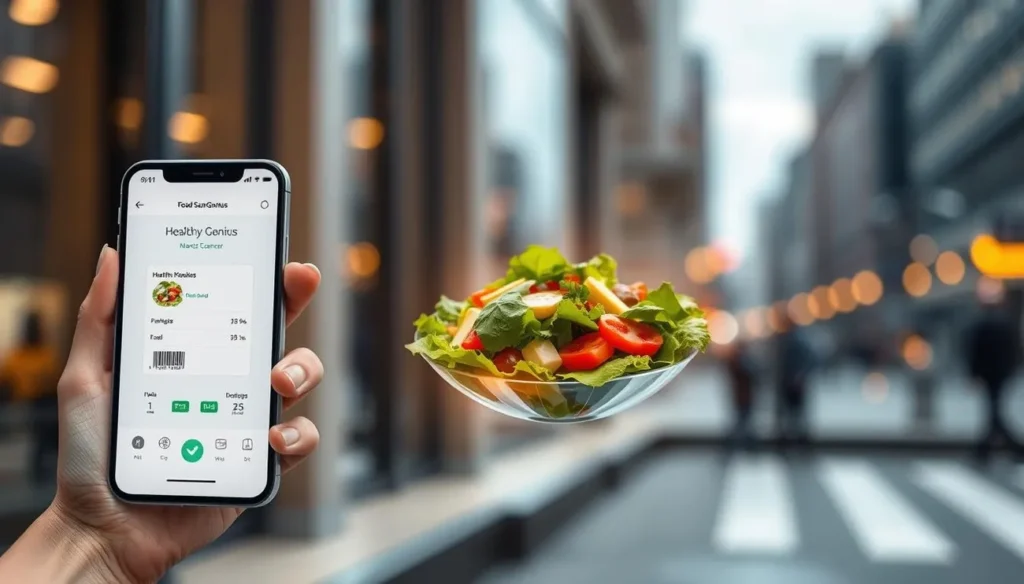The Hidden Truth About Gluten-Free Diet: Benefits Your Doctor Never Mentioned
 The gluten free diet has skyrocketed in popularity. Americans spent more than $15.5 billion on gluten-free foods in 2016—double the amount from just five years earlier. While less than 1% of the U.S. population has celiac disease, roughly 20-30% of Americans have tried or currently follow a gluten-free lifestyle. This stark contrast between medical necessity and actual adoption makes us wonder what benefits drive so many people to eliminate gluten.
The gluten free diet has skyrocketed in popularity. Americans spent more than $15.5 billion on gluten-free foods in 2016—double the amount from just five years earlier. While less than 1% of the U.S. population has celiac disease, roughly 20-30% of Americans have tried or currently follow a gluten-free lifestyle. This stark contrast between medical necessity and actual adoption makes us wonder what benefits drive so many people to eliminate gluten.
Benefits of avoiding gluten go well beyond what doctors typically discuss with their patients. People who avoid gluten more than tripled between 2009 and 2014, which suggests many experience positive changes without a celiac diagnosis. Making this dietary choice can be challenging. Tools like the Food Scan Genius app help make it easier with its 35 customizable filters and AI technology. This piece will reveal the hidden benefits of a gluten free diet that your doctor probably never mentioned.
Why gluten-free is more than a medical necessity
The popularity of gluten-free diets has skyrocketed among people with no diagnosed conditions. The market for gluten-free products grew at an amazing rate of 28% each year between 2004 and 2011 [1]. Sales reached about $2.60 billion by 2012 [1] and experts predict this number will hit $6.60 billion by 2017 [1]. These numbers show that gluten-free living has spread way beyond people with celiac disease.
The rise of gluten-free among healthy individuals
Only 1% of people have celiac disease and 3-6% have non-celiac gluten sensitivity [2]. Yet about 25% of Americans ate gluten-free products in 2015 [2]. This gap suggests that roughly 20% of people pick gluten-free foods without any medical reason.
NPD’s 2013 survey shows that 30% of Americans wanted to avoid gluten [1]. Another study found that 65% of American adults think gluten-free foods are healthier [1]. On top of that, a 2015 Nielsen survey of 30,000 adults worldwide showed that 21% of people rated gluten-free as a “very important” factor when buying food [3].
The typical gluten-free consumer might surprise you. A 2015 survey revealed that gluten-free food purchases were more common among:
- Women (23% versus 19% of men)
- Non-white respondents (31% versus 17% of white respondents)
- Those with a high school diploma or less (26% versus 17% with some college education)
- Households with income below $30,000 (24% versus 15% of those earning $75,000+) [3]
Perceived vs real benefits of not eating gluten
People often choose gluten-free diets based on beliefs rather than science. A 2015 survey revealed that “no reason” (35%) topped the list for picking gluten-free foods. “Healthier option” (26%) and “digestive health” (19%) followed [3]. Weight loss wasn’t a big factor, though most people believe it’s the main benefit [4].
People who eat gluten-free foods often think they’re healthier because they seem like “cleaner” alternatives to regular products [5]. Many say they feel less bloated and have better digestion after cutting out gluten [5]. Research shows that beliefs like “a gluten-reduced diet is healthier” and “gluten-free products are more nutritious than regular ones” often lead people to try gluten-free diets [6].
Notwithstanding that, scientists agree that removing gluten doesn’t improve health if you have no gluten sensitivity [2]. Gluten-free products often have more calories, fat, and sodium. They also contain less vitamin B-12, folate, niacin, vitamin D, iron, zinc, magnesium, calcium, dietary fiber, and protein than regular foods [2].
The Food Scan Genius app is a great way to get help if you’re learning about gluten-free options. It uses AI-powered conversation technology and offers over 35 customizable filters. This difference matters because many processed gluten-free foods pack extra sugar, fat, and additives to make up for missing gluten [5].
Surprising benefits of gluten-free living
People without celiac disease have found substantial improvements in their overall wellbeing after switching to a gluten-free diet. These unexpected health benefits are way beyond what most healthcare providers typically discuss with patients.
Better digestion even without celiac disease
A gluten-free diet can dramatically improve your digestive function even without celiac disease. One of the most immediate effects is reduced bloating and gas – common symptoms that usually improve within weeks [7]. If you have non-celiac gluten sensitivity, removing gluten reduces inflammation in your digestive tract and allows the gut lining to recover [7].
Your bowel movements become more regular after eliminating gluten. People who used to deal with chronic constipation or diarrhea often notice their digestive rhythm returns to normal [7]. A balanced gluten-free diet rich in fiber from fruits, vegetables, and gluten-free whole grains supports healthy digestion [8].
The Food Scan Genius app makes finding truly healthy gluten-free options easier with its 35 customizable filters and AI-powered conversation technology. Unlike other food scanners, it helps you identify products that are both gluten-free and nutritionally balanced.
Improved sleep and reduced inflammation
So, removing gluten may substantially improve your sleep quality. Research shows that people with celiac disease are nearly twice as likely to struggle with insomnia [9], but eliminating gluten can help restore normal sleep patterns.
Gluten and sleep are connected through inflammation. Gluten consumption triggers inflammatory responses in sensitive individuals that disrupt the gut microbiome [10]. This matters because your gut produces 95% of your body’s serotonin – a precursor to melatonin, the sleep hormone [11].
Plus, gluten-related inflammation affects how your body absorbs sleep-essential minerals:
- Calcium (affects melatonin production)
- Magnesium (supports relaxation)
- Potassium (regulates sleep cycles) [10]
A 4-6 week gluten elimination diet might reveal whether gluten sensitivity affects your sleep [10].
Boosted mental clarity and mood
Going gluten-free benefits extend to mental wellbeing. “Brain fog” – marked by difficulty concentrating, memory problems, and mental fatigue – commonly affects people with gluten sensitivity [12].
Clinical studies have found gluten-free diets substantially improve pooled depressive symptom scores in treated patients. After one year, there was no difference in mean scores between patients and healthy controls [13]. The inflammation from gluten consumption can affect any part of your body, including your brain, and may demonstrate as psychiatric or behavioral issues [1].
Research reveals fascinating connections between gluten and specific mental health conditions. A study of 67 patients with ADHD found that 10 had celiac disease. These patients experienced substantial improvements in behavior and functionality after starting a gluten-free diet [1].
The gut-brain axis – a bidirectional communication network with the nervous system, immune system, and gut microbiota – explains much of this connection [12]. Through this pathway, chronic gut inflammation directly influences brain function and may contribute to anxiety, depression, and cognitive decline [12].
The Food Scan Genius app can help you begin your gluten-free lifestyle by identifying suitable food options through its advanced AI technology.
What your doctor might not tell you
What your doctor might not tell you
Medical professionals typically focus on digestive symptoms when patients ask about going gluten-free. The effects of gluten reach way beyond the reach and influence of your gut and affect many body systems that doctors rarely discuss.
The link between gluten and skin issues
Your body’s internal health shows up on your skin. Research reveals that 15-25% of people with celiac disease develop dermatitis herpetiformis, an intensely itchy rash that demonstrates celiac disease on the skin [2]. Many skin conditions improve by a lot with a gluten-free diet:
- Psoriasis (studies show high levels of anti-gliadin antibodies in 14% of psoriasis patients [4])
- Eczema (51% of participants in one study felt better after eliminating gluten [4])
- Chronic urticaria (hives)
- Alopecia areata (hair loss)
- Aphthous stomatitis (canker sores)
Gluten triggers inflammatory immune responses that show up on the skin. The inflammation damages the intestinal lining, which lets food particles leak into the bloodstream and causes immune reactions throughout the body [14].
How gluten may affect hormones and PMS
Gluten acts as an endocrine disruptor and can throw your hormonal balance off track [15]. Gluten sensitivity’s inflammation raises cortisol levels and blocks proper hormone production [15]. Women face these specific challenges:
Painful or irregular periods occur as gluten can trigger or worsen endometriosis, adenomyosis, and amenorrhea [16]. Strict gluten avoidance becomes the primary treatment for certain types of amenorrhea [16].
A gluten-free diet often helps reduce PMS symptoms. Gluten creates gut inflammation that slows digestion and keeps excess estrogen in the body longer [14]. This leads to estrogen dominance, a hormone imbalance behind many period problems.
Gluten and joint pain: is there a connection?
Millions of Americans with celiac disease or gluten sensitivity experience joint pain [5]. Rheumatoid arthritis patients sensitive to gluten report much less joint pain after removing it from their diet [5].
The immune system attacks gluten as an invader in sensitive individuals who eat wheat, barley, or rye. This triggers body-wide inflammation [17]. The inflammatory response affects:
- The joints themselves
- Connective tissues where tendons attach to bones
- Soft tissues surrounding joints
Tracking food triggers helps identify inflammation sources. The Food Scan Genius app makes this easier with its 35 customizable filters and AI conversation technology. This helps you find truly gluten-free options while shopping.
A 4-6 week gluten-free diet trial might reveal if gluten sensitivity causes your unexplained joint pain [17].
How to make gluten-free work for you
Making the switch to gluten-free eating needs practical knowledge and good planning. Let’s learn how to make this dietary change work for your health and lifestyle.
What foods are gluten free and naturally healthy
Start with naturally gluten-free foods as your diet’s foundation. Fresh fruits, vegetables, unprocessed meats, poultry, fish, eggs, and dairy products are all naturally free from gluten [18]. Your grain options include:
- Quinoa, rice, and buckwheat
- Amaranth, millet, and teff
- Certified gluten-free oats
Watch out for processed foods because gluten shows up in unexpected places like sauces, seasonings, and marinades. Shopping might feel overwhelming at first, but give yourself time to adjust [19].
Gluten-free diet plan for beginners
Clear your kitchen of foods containing gluten and set up separate cooking areas to avoid cross-contamination [18]. Keep gluten-free foods in their own space and use separate cooking utensils [18].
Batch cooking can help with meal planning. Cook basics like brown rice, quinoa, and roasted vegetables that you can mix and match throughout the week. The Food Scan Genius app makes shopping easier with its 35 customizable filters and AI-powered technology. This app helps identify truly gluten-free products, which is nowhere near as time-consuming as checking every label manually.
Exploring gluten and dairy free diet options
People often see benefits when they cut out both gluten and dairy. This approach might reduce inflammation more for those with sensitivities [20]. Most naturally gluten-free whole foods like vegetables, fruits, meat, poultry, fish, legumes, nuts, and seeds are dairy-free too [21].
Plant-based alternatives work great for dairy. You can try milk, yogurt, and cheese options made from almonds, coconut, or soy [6].
Trying a gluten free Mediterranean diet
The Mediterranean diet adapts perfectly to gluten-free living and offers great health benefits. Research shows this eating pattern cuts the risk of heart attack, stroke, and heart-related deaths by 30% [3].
This diet puts plant-based foods first, including vegetables, fruits, legumes, nuts, seeds, herbs, and spices [3]. You can swap traditional wheat products with gluten-free options like brown rice, quinoa, and certified gluten-free ancient grains [22].
Olive oil stands out as the main fat source, while fish, seafood, dairy, and poultry play supporting roles [3]. This balanced approach turns gluten-free eating into an enjoyable lifestyle choice.
Tech tools to simplify your gluten-free lifestyle

Image Source: Food Scan Genius
Technology has changed how we handle dietary restrictions. If you have a gluten-free diet, new apps and devices make finding safe foods easier than reading tiny ingredient labels.
Benefits of using a gluten food scanner
Gluten food scanners take away the uncertainty of grocery shopping. These tools tell you right away if products contain gluten. You’ll save time and feel less stressed. Barcode scanning technology lets you check if items are safe without reading confusing ingredient lists.
Most food scanner apps give you:
- Detailed ingredient analysis and allergen information
- Cross-contamination warnings if you’re sensitive
- Customizable dietary preference settings
- Live product updates
- Options for “gluten free near me
These features help you spot gluten that often hides in sauces, seasonings, and processed foods. Your food scanner works like a personal nutritionist at the store and helps you decide what to buy quickly.
How ‘Food Scan Genius’ helps you shop smarter
Food Scan Genius stands out from other gluten detection apps with its detailed database of over 500,000 products. The database includes 80,000 certified gluten-free items [23]. This means 16% of their products are gluten-free options (like gluten-free breads) for example) [24].
The app’s sophisticated barcode scanning technology analyzes products instantly. You get detailed information about ingredients, allergens, and nutritional content. Each scan runs multiple checks [23] so you can trust your food choices.
Food Scan Genius maintains a 4.0+ rating on app stores [24], showing how much users trust it. Download Food Scan Genius and see how it changes your life – let us know in the comments.
AI-powered food conversations and filters
Artificial intelligence has reshaped gluten-free living through advanced conversational features. AI chatbots give accurate information about gluten-free foods. ChatGPT showed 100% accuracy in identifying gluten-free items in one study [25].
Food Scan Genius uses AI technology with 35 customizable filters to match your specific needs. The technology checks ingredient lists faster and flags potential issues. It suggests alternatives that fit your dietary requirements.
AI helps with shopping and suggests recipes for meal planning. This makes the gluten-free lifestyle easier to manage. Physical gluten testers like LEO exist [26], but app-based solutions work better for daily use.
Conclusion
Gluten-free diets began as a medical necessity for celiac patients, but millions of people now adopt this lifestyle because it offers benefits beyond digestive health. This piece shows how removing gluten from your diet might boost sleep quality, mental clarity, skin health, hormone balance, and reduce joint pain – things your doctor probably hasn’t mentioned.
The switch to gluten-free living can be daunting. People often feel lost when they read ingredient lists and search for alternatives. We have a long way to go, but we can build on this progress as modern technology makes this experience easier.
Food Scan Genius emerges as a vital tool for anyone learning about gluten-free options. The app sets itself apart with 35 customizable filters and AI-powered conversation technology that spots safe products during shopping trips. Its massive database of 500,000+ products, which has 80,000 certified gluten-free items, helps users make confident food choices.
The right tools can make a huge difference, whatever your reason for going gluten-free – celiac disease, non-celiac gluten sensitivity, or health experimentation. A healthcare professional should guide your dietary changes. Food Scan Genius will then help simplify your shopping. Users say this free app reshapes the scene of their food relationship and makes healthy choices simple.
Note that “gluten-free bread” doesn’t always mean healthy. The best results come from a balanced approach that prioritizes natural gluten-free whole foods over processed alternatives. Your body needs quality fuel, whatever your dietary choices.
Did you see any changes after cutting back on gluten? Get Food Scan Genius today and tell us about your unique experience in the comments below!
FAQs
Q1. What are some surprising benefits of a gluten-free diet?
Some unexpected benefits of going gluten-free include improved sleep quality, enhanced mental clarity, clearer skin, better hormone balance, and reduced joint pain. These effects can occur even in people without celiac disease.
Q2. How can technology help with maintaining a gluten-free lifestyle?
Apps like Food Scan Genius use AI and barcode scanning to instantly identify gluten-free products while shopping. These tools provide detailed ingredient analysis, allergen information, and customizable filters to simplify the process of finding safe foods.
Q3. Is a gluten-free diet beneficial for everyone?
While essential for those with celiac disease or gluten sensitivity, there’s no clear evidence that a gluten-free diet benefits everyone. However, some people report improvements in digestion, energy levels, and overall well-being after eliminating gluten.
Q4. How does gluten affect skin health?
Gluten can trigger inflammatory responses in sensitive individuals, which may manifest as skin issues. Conditions like dermatitis herpetiformis, psoriasis, and eczema have been known to improve in some people after adopting a gluten-free diet.
Q5. Can going gluten-free help with hormonal imbalances?
Some research suggests that gluten can act as an endocrine disruptor, potentially affecting hormone balance. Women, in particular, may experience improvements in menstrual irregularities and PMS symptoms when following a gluten-free diet.
References
[1] – https://gluten.org/2021/09/08/gluten-and-your-mental-health/
[2] – https://www.verywellhealth.com/celiac-disease-gluten-sensitivity-linked-to-skin-issues-563126
[3] – https://celiac.org/2022/07/28/celiac-disease-foundation-introduces-7-day-gluten-free-mediterranean-diet-meal-plan/
[4] – https://pmc.ncbi.nlm.nih.gov/articles/PMC10544948/
[5] – https://www.arthritis.org/health-wellness/healthy-living/nutrition/anti-inflammatory/the-connection-between-gluten-and-arthritis
[6] – https://quanutrition.com/blog/gluten-and-dairy-free-diet/
[7] – https://gimed.net/blog/how-gluten-free-diets-impact-digestive-health/
[8] – https://livepacha.com/blogs/news/gluten-free-diets-a-path-to-better-digestive-health?srsltid=AfmBOopHB7PiuT6c13duE6tuAVrbU9SZTb4wEiqMPiMNTcTDxYZMdpJV
[9] – https://gluten.org/2025/02/11/how-gluten-messes-with-your-sleep-and-brain-and-what-to-do-about-it/
[10] – https://www.uhhospitals.org/blog/articles/2025/01/can-gluten-sensitivity-cause-insomnia
[11] – https://kellymurrayadultsleep.com/articles/going-gluten-free-for-sleep
[12] – https://www.celiac.com/celiac-disease/can-gluten-free-diets-improve-mental-health-exploring-the-gut-brain-connection-in-celiac-disease-r6798/
[13] – https://pmc.ncbi.nlm.nih.gov/articles/PMC6266949/
[14] – https://floliving.com/blog/gluten-and-hormones-is-this-a-problem-for-you
[15] – https://www.glutenfreesociety.org/can-gluten-affect-your-hormones/?srsltid=AfmBOorcUy_WEec1idmqSQR2MWWrQoZWhChnaDA1-FamaW6elCbrmHff
[16] – https://www.larabriden.com/how-wheat-or-gluten-affects-periods/
[17] – https://www.bswhealth.com/blog/does-gluten-cause-inflammation-joint-pain
[18] – https://www.mayoclinic.org/healthy-lifestyle/nutrition-and-healthy-eating/in-depth/gluten-free-diet/art-20048530
[19] – https://gluten.org/2021/07/16/10-tips-for-living-your-gluten-free-life/
[20] – https://pmc.ncbi.nlm.nih.gov/articles/PMC6093178/
[21] – https://www.drbrookestuart.com/gluten-free-and-dairy-free-diet/
[22] – https://fullymediterranean.com/featured/how-to-follow-a-gluten-free-mediterranean-diet/
[23] – https://scangeni.us/discover-gluten-free-products-easily-with-this-scanner/
[24] – https://scangeni.us/best-gluten-free-app-scan-barcode-for-easy-shopping/
[25] – https://journals.lww.com/ajg/fulltext/2023/10001/s1830_artificial_intelligence_for_gluten_free_diet.2171.aspx
[26] – https://leoverified.com/blogs/news/the-ultimate-gluten-free-sidekick?srsltid=AfmBOop4wQXfO233PB1sNSfJkTJ1ue3uf4P0foIR6fM6gE0xa-aPk390





